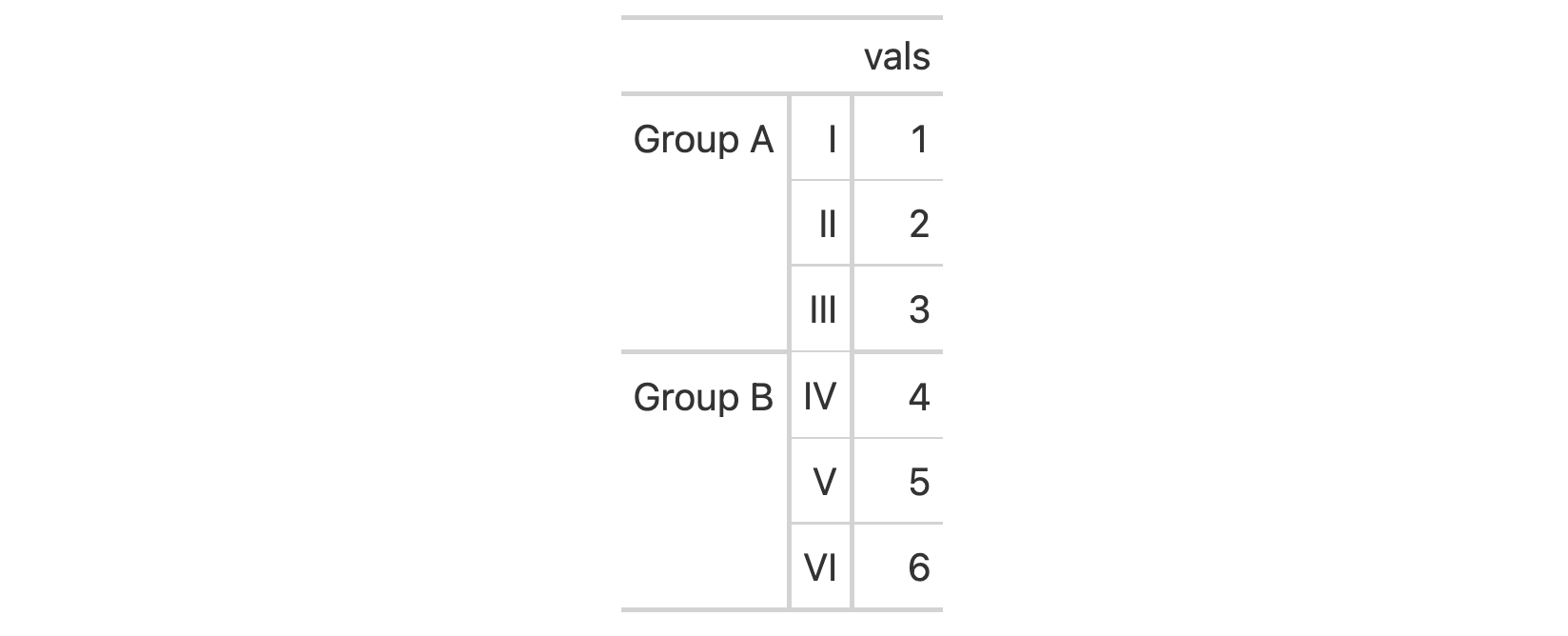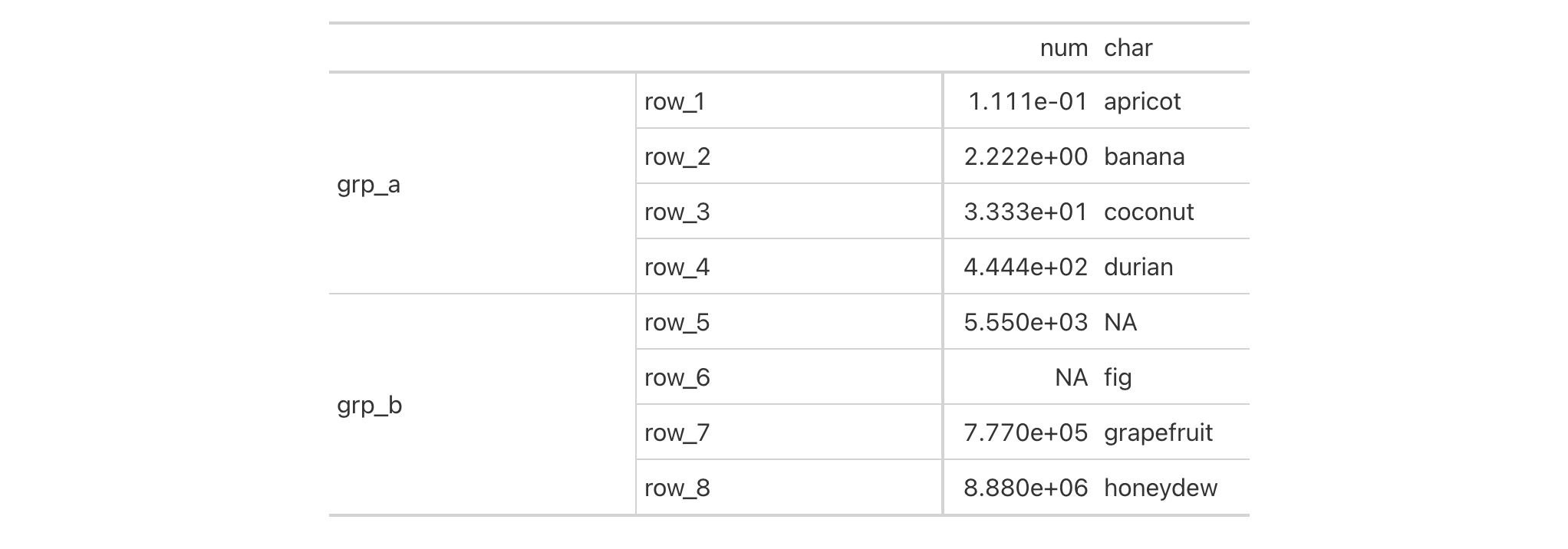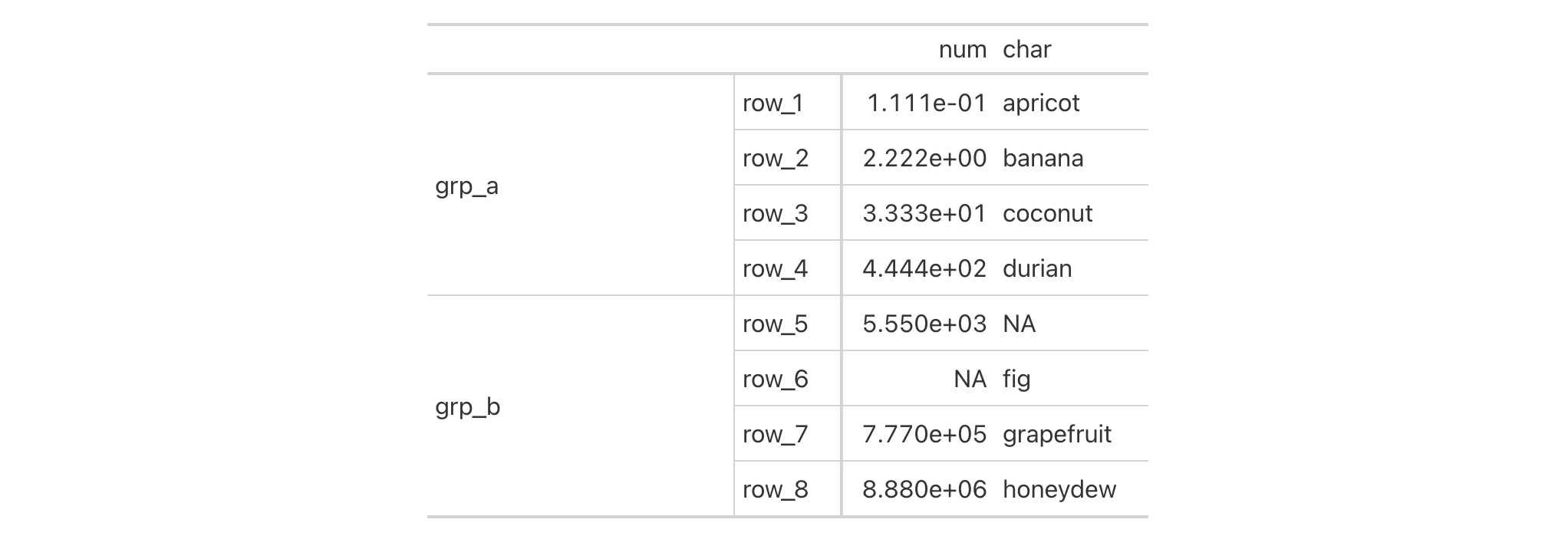Should you need to target only the stub column for formatting or other
operations, the stub() select helper can be used. This obviates the need
to use the name of the column that was selected as the stub column.
Examples
Create a tibble that has a row column (values from 1 to 6), a group
column, and a vals column (containing the same values as in row).
Create a gt table with a two-column stub (incorporating the row and
group columns in that). Format the row labels of the stub with
fmt_roman() to obtain Roman numerals in the stub; we're selecting the stub
column here with the stub() select helper.
tbl |>
gt(rowname_col = "row", groupname_col = "group") |>
fmt_roman(columns = stub()) |>
tab_options(row_group.as_column = TRUE)
For multi-column stubs, you can set widths for all stub columns together or target specific columns individually:
exibble |>
dplyr::select(num, char, row, group) |>
gt(rowname_col = c("group", "row")) |>
cols_width(
stub() ~ px(200), # All stub columns get 200px
everything() ~ px(100)
)
Or target specific stub columns (1 = rightmost, 2 = second from right):
exibble |>
dplyr::select(num, char, row, group) |>
gt(rowname_col = c("group", "row")) |>
cols_width(
stub(1) ~ px(70), # Rightmost stub column (row)
stub(2) ~ px(200), # Second stub column (group)
everything() ~ px(100)
)
See also
Other helper functions:
adjust_luminance(),
cell_borders(),
cell_fill(),
cell_text(),
currency(),
default_fonts(),
escape_latex(),
from_column(),
google_font(),
gt_latex_dependencies(),
html(),
latex(),
md(),
nanoplot_options(),
pct(),
px(),
random_id(),
row_group(),
system_fonts(),
unit_conversion()